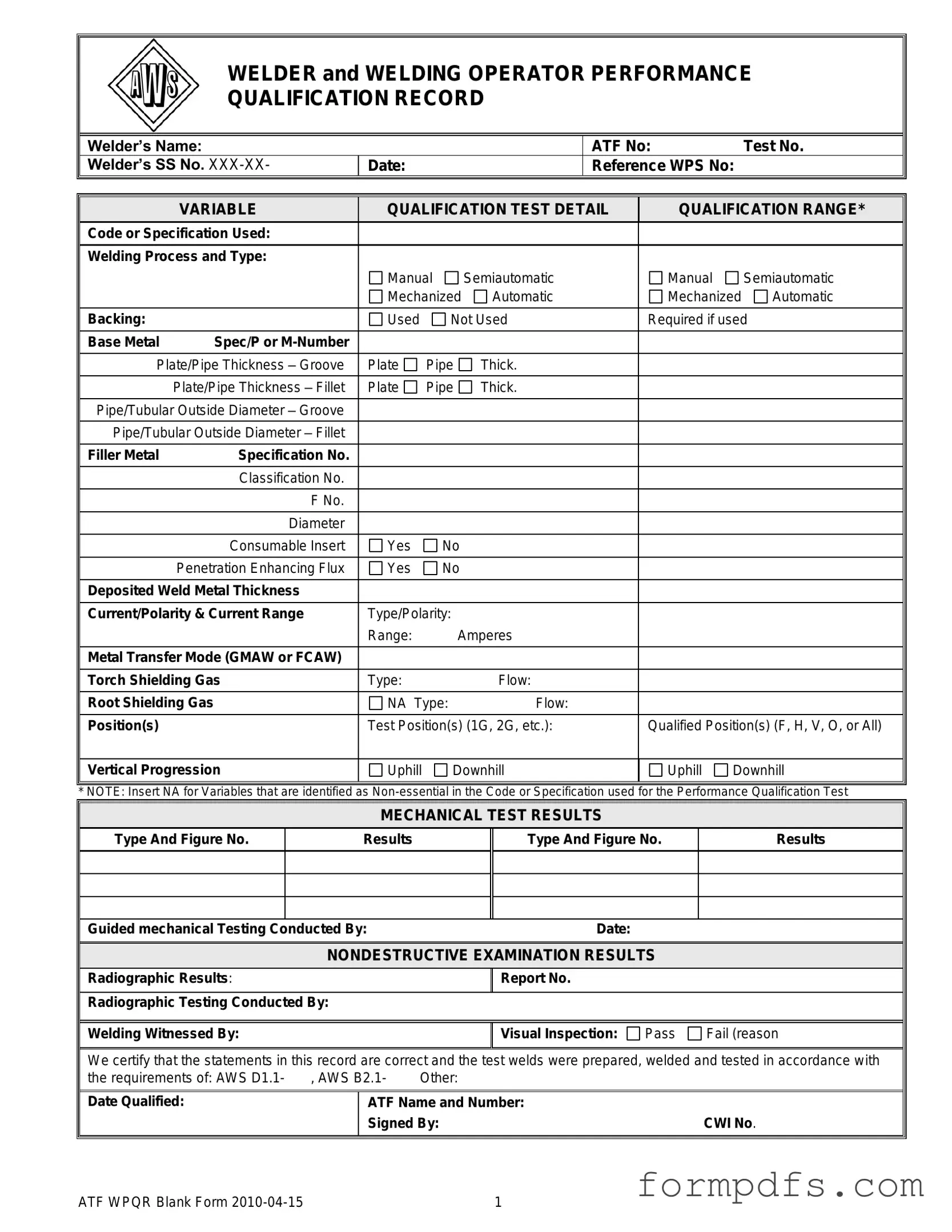What is the purpose of the Welder Performance Qualification Record form?
The Welder Performance Qualification Record form serves as an official document that verifies a welder's skills and qualifications. It outlines the specific tests the welder has completed and the results achieved. This record is essential for ensuring that welders meet industry standards and are capable of performing welding tasks safely and effectively.
What information is included in the form?
The form includes several key pieces of information. It captures the welder's name, identification numbers, and the date of qualification. Additionally, it details the welding processes used, the materials involved, and the specific test results, including mechanical and non-destructive examination outcomes. This comprehensive data helps employers assess a welder's capabilities and compliance with industry standards.
How does the qualification process work?
The qualification process typically involves the welder completing a series of tests as outlined by specific codes or specifications, such as AWS D1.1. These tests assess various welding techniques and positions. After successfully completing the tests, the results are documented on the form. A certified welding inspector (CWI) must then review and sign the form to validate the qualifications.
What are the key components of the mechanical test results?
The mechanical test results section of the form includes the types of tests conducted, such as tensile or bend tests, along with their corresponding results. This section may also reference specific figures or standards that detail the performance expectations. Accurate documentation of these results is critical for verifying the welder's proficiency and ensuring compliance with relevant codes.
What role does non-destructive examination play in the qualification?
Non-destructive examination (NDE) is a crucial step in the qualification process. It assesses the integrity of the weld without damaging it. Common NDE methods include radiographic testing and visual inspections. The results of these examinations are documented in the form, providing additional evidence of the weld quality and the welder's skill level.
How long is the qualification valid, and how can it be renewed?
The validity of the qualification can vary based on industry standards and employer policies. Generally, qualifications may need to be renewed every six months to three years, depending on the specific requirements of the code or specification used. Renewal often involves re-testing or demonstrating ongoing competency through additional training or work experience.
